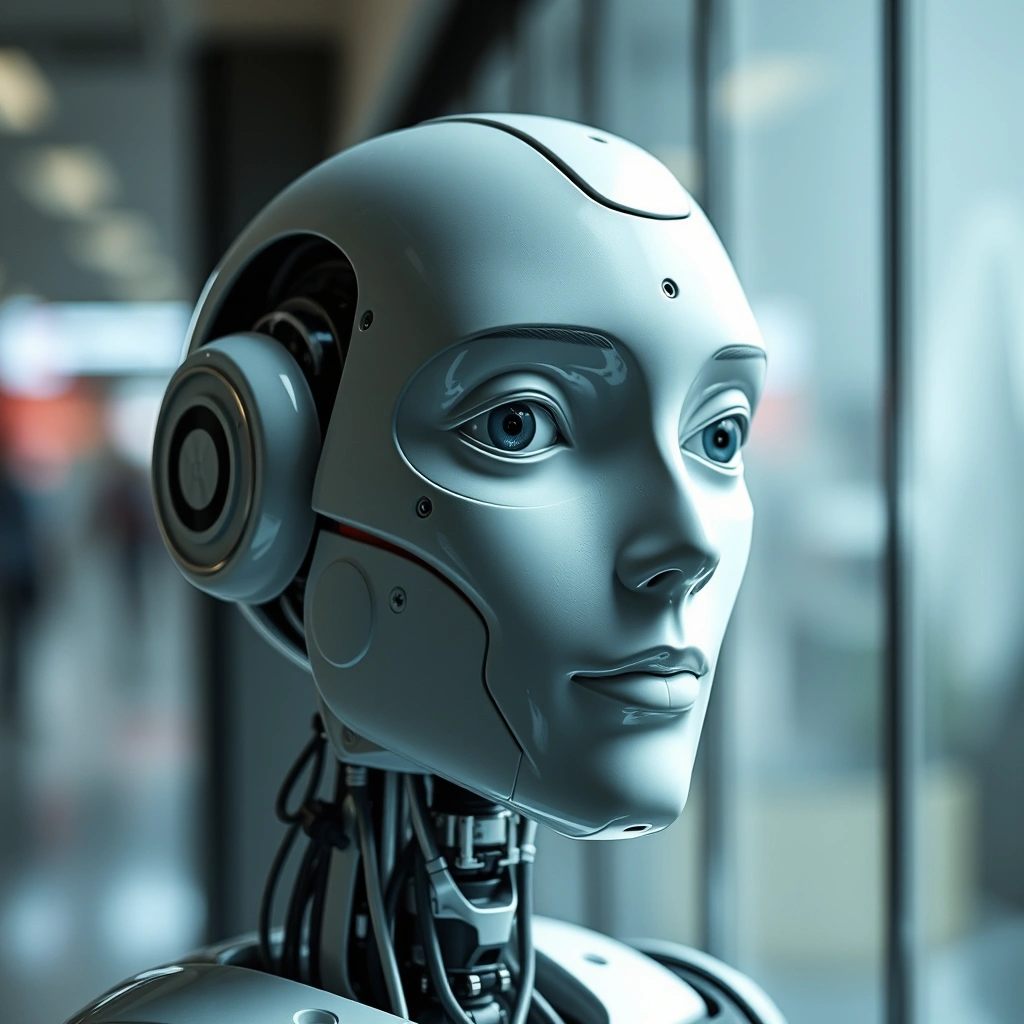The Rapid Rise of AI Chatbots in Customer Support
Imagine reaching out for support and receiving an instant, accurate response—no more waiting on hold or struggling through confusing menus. This transformative experience is becoming the norm thanks to AI chatbots. Once considered a futuristic convenience, these digital assistants are now core to customer support in nearly every industry. Their surge in popularity isn’t just hype; companies of all sizes are discovering that AI chatbots deliver real-time assistance, never tire, and are available 24/7. But what’s really driving this revolution? Let’s explore the powerful reasons AI chatbots are taking over customer support and how this shift benefits both businesses and customers alike.
The Evolution of Customer Support: From Call Centers to AI Chatbots
Traditional Support vs. Digital Expectations
Customer support has evolved dramatically over the past two decades. Not long ago, phone-based call centers and email were considered cutting-edge solutions. However, as consumer expectations soared—with demands for immediacy, ease, and accessibility—the old systems started to crack. Today’s customers want answers on their terms, via chat, social media, or messaging apps, often outside of business hours.
AI chatbots emerged to fill this gap, combining advanced natural language processing (NLP) with machine learning to understand, interpret, and resolve customer inquiries. Unlike human agents, AI chatbots can serve thousands of users simultaneously without fatigue or lapses in accuracy.
How AI Chatbots Outperform Traditional Channels
AI chatbots revolutionize support in several critical ways:
– Instant availability: They respond in seconds, no matter the volume.
– Seamless omnichannel integration: Chatbots operate across websites, apps, and even platforms like WhatsApp and Facebook Messenger.
– Cost-effectiveness: Deploying chatbots reduces overhead by minimizing reliance on large support teams.
– Consistency: They deliver uniform quality, ensuring every customer receives accurate information.
An example from Gartner underscores their effectiveness: by 2027, chatbots are expected to become the primary customer service channel for a quarter of organizations. This shift reflects widespread recognition that AI chatbots enhance efficiency and satisfaction across all touchpoints.
Why Businesses Choose AI Chatbots for Customer Support
Unmatched Scalability and Cost Savings
One of the most compelling reasons for adopting AI chatbots is their scalability. Unlike human teams limited by shift schedules and fatigue, AI chatbots can manage thousands of conversations at once. This is particularly crucial for large enterprises or during peak times (such as product launches or sales) when query volumes spike.
Key benefits include:
– Reduced wait times, boosting customer satisfaction.
– Lower operational costs—Gartner estimates that chatbots can help businesses save up to 30% in customer support expenses.
– Ability to reallocate human agents to more complex, value-added tasks.
24/7 Global Support
In a global, always-on economy, customers expect help around the clock. AI chatbots never sleep, making round-the-clock support possible without increasing payroll costs.
These digitally tireless agents are especially valuable for:
– E-commerce businesses catering to international shoppers.
– Service industries, such as travel or hospitality, where immediate assistance is crucial.
– Any company looking to build loyalty by being there whenever customers need help.
For more on how AI is transforming business operations beyond customer support, check out this McKinsey report: https://www.mckinsey.com/featured-insights/artificial-intelligence.
How AI Chatbots Enhance the Customer Experience
Faster Response Times and Instant Solutions
Speed is king in customer support, and nothing rivals the instant response times of AI chatbots. Whether it’s answering FAQs, processing returns, or guiding users through troubleshooting steps, chatbots provide immediate, accurate responses.
Practical ways AI chatbots improve experiences:
– Providing step-by-step support for technical issues.
– Quickly surfacing relevant articles or resources from knowledge bases.
– Offering multilingual support, removing language barriers.
Personalization and Proactive Service
Modern AI chatbots go far beyond rote responses. By pulling data from customer profiles, past purchases, and browsing behavior, they personalize answers—making each interaction feel tailored and relevant.
Examples of next-level personalized support:
– Proactive order updates or shipping notifications.
– Product recommendations based on purchase history.
– Reminders for upcoming renewals or appointments.
According to a Salesforce study, 64% of consumers expect real-time, tailored experiences, and AI chatbots are uniquely positioned to deliver on this modern demand.
AI Chatbots: Common Use Cases in Customer Support
Top Ways Companies Deploy AI Chatbots
AI chatbots aren’t just a futuristic experiment—they’re already solving real problems for businesses worldwide. Common use cases include:
– Handling order tracking and status updates.
– Resolving password resets and account access issues.
– Managing bookings or reservations.
– Troubleshooting common technical issues.
– Answering product-related questions.
– Assisting with returns and refunds.
A great example is how retailers use chatbots to automate tracking inquiries, freeing up live agents to handle escalations. In the travel industry, AI chatbots quickly manage itinerary changes and emergencies, providing peace of mind when travelers need it most.
Supporting Agents, Not Replacing Them
AI chatbots aren’t here to replace human agents entirely. Their real power lies in handling repetitive or straightforward tasks, allowing human agents to focus on more complex, emotionally nuanced issues. This teamwork reduces agent burnout and improves resolution rates for involved problems.
Technologies Powering AI Chatbots
Natural Language Processing and Understanding
The core of any effective AI chatbot is advanced natural language processing (NLP). This allows chatbots to interpret customer questions—even those phrased informally or with slang—and provide relevant answers.
Key NLP features include:
– Sentiment analysis: Understanding customer mood and urgency.
– Entity recognition: Identifying key information, such as order numbers or product names.
– Context management: Following multi-turn conversations without losing track.
Machine Learning and Continuous Improvement
Machine learning enables AI chatbots to learn from every interaction, refining their responses over time. Each resolved inquiry becomes training data, improving future accuracy and efficiency.
Notably, many modern chatbot platforms employ reinforcement learning, where customer feedback is integrated to fine-tune the chatbot’s decision-making. This means that the longer a chatbot is live, the smarter and more helpful it becomes.
Real-World Business Impacts of AI Chatbots
Boosting Customer Satisfaction and Loyalty
Studies consistently show that fast, effective support improves both retention and lifetime value. According to Forrester, 44% of online customers say that live chat (including AI-driven) is among the most important features a company can offer.
AI chatbots don’t just deliver answers—they create a smoother, more satisfying support journey, turning one-time buyers into repeat customers.
Improving Support Metrics and Efficiency
Common improvements enterprises report after adopting AI chatbots include:
– Faster first response times.
– Higher resolution rates for tier-1 inquiries.
– Lower support ticket volumes for human agents.
– Improved Net Promoter Scores (NPS) and customer satisfaction survey results.
Beyond metrics, customer stories abound of chatbots resolving crises quickly (like reissuing concert tickets or booking last-minute flights) that would have otherwise led to frustration and lost revenue.
Addressing Concerns: Limitations and Best Practices of AI Chatbots
When Human Touch Is Still Essential
Despite their strengths, AI chatbots have limitations. They may struggle with nuanced, emotionally charged, or unusually complex scenarios. Forward-thinking companies address this by:
– Ensuring seamless handoff to human agents when needed.
– Regularly updating the chatbot with new knowledge and FAQs.
– Gathering and acting on customer feedback.
This balanced approach preserves empathy and depth where it matters most, while letting chatbots handle the rest.
Transparency and Building Trust
Clear communication about when customers are speaking with an AI chatbot versus a human is crucial. Transparency helps set expectations and builds trust.
Best practices include:
– Introducing the chatbot at the start of each chat.
– Providing clear paths to escalate to a human.
– Using analytics to monitor and improve chatbot performance continually.
For more insights and ethical considerations around AI in support, visit the AI Now Institute: https://ainowinstitute.org.
The Future of AI Chatbots in Customer Support
AI Chatbots Are Evolving Rapidly
The pace of innovation in AI chatbots is staggering. Advances in conversational AI, voice technology, and integration with emerging platforms are making these digital agents even smarter and more versatile.
Emerging trends include:
– Voice-enabled support, offering hands-free help through smart speakers or phones.
– Emotional intelligence, allowing chatbots to detect frustration and adapt their tone.
– Deeper integration with CRM systems, providing highly contextual support.
Staying Ahead in a Competitive Landscape
For businesses, implementing or upgrading AI chatbots isn’t just about cutting costs—it’s about staying relevant. Customers are forming new expectations around speed, convenience, and personalization. Businesses that fail to meet these demands risk losing out to more agile competitors.
If you’re considering adding or enhancing AI chatbots in your customer support ecosystem, now is the time to act. Early adopters are already reaping measurable returns in customer loyalty, efficiency, and bottom-line results.
Your Action Plan: From Chatbot Curiosity to Deployment
AI chatbots have shifted from “nice-to-have” to “mission critical” for companies seeking to thrive in a customer-centric world. They offer instant, personalized support, scale with ease, and empower your human team to focus where it counts most.
Ready to explore how AI chatbots can revolutionize your customer support? Start by mapping your most common support queries, researching top chatbot platforms, and planning how automation can complement (not replace) your expert team. Want personalized guidance or a deeper strategy session? Reach out directly at khmuhtadin.com to take the next step toward a smarter, more responsive customer support operation.









